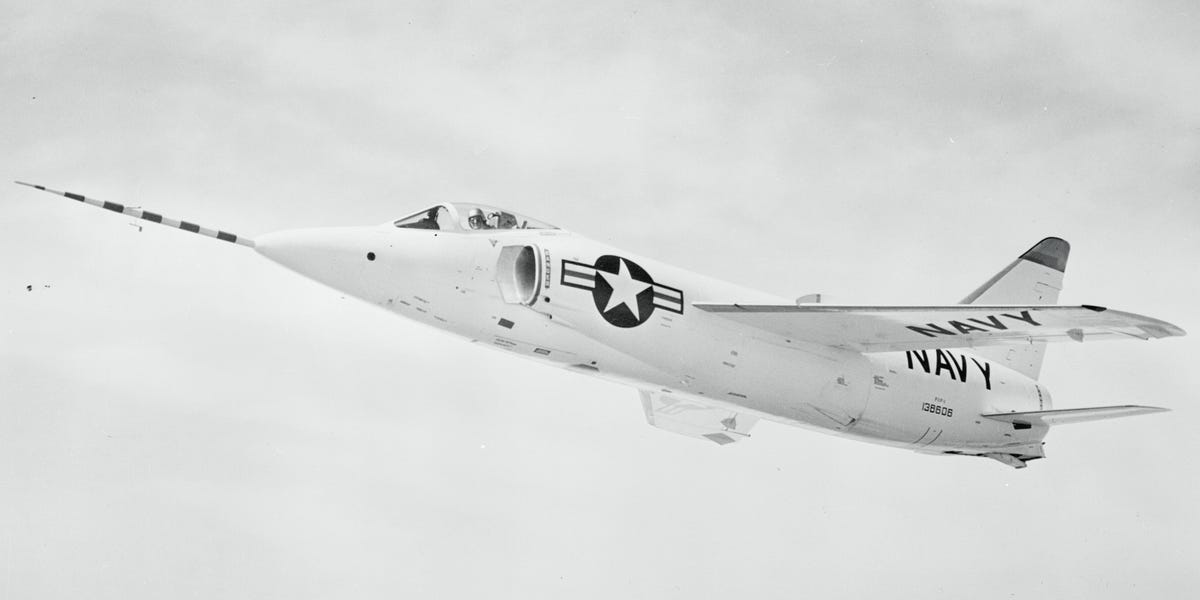An aeronautical physics question popped into my head while reading an article about the missiles that the J-20 carries. If I'm in a fighter travelling at Mach 2, and I fire a missile at a plane coming at me at Mach 2, and the missile can travel at Mach 2, what relative speed does the missile hit the enemy aircraft? A) Mach 6 (the sum of the speed of all three aircraft), Mach 4(the speed of the missile and the incoming aircraft) or Mach 2(the speed of the missile?
Announcement
Collapse
No announcement yet.
Is there an aeronautical engineer around?
Collapse
X
-
So.... do you want a super-technical answer... or a generalized one?
First off, we're assuming the inherited velocity is total, which it isn't. Second, we're assuming the missile velocity remains constant, which it doesn't. Third, we need to know the initial distance between the missile and the target the moment the missile is fired. In general, the velocities of the missile and firing platform are not strictly additive over time, so we must be careful applying it to aerodynamic examples dealing with projectiles in atmosphere because there are factors such as air resistance that compound to degrade the initial velocity the missile might enjoy at the moment of launch. Now, I suppose we could assume the path of both the missile and the target are perfectly straight (zero additional vectors whatsoever), which makes things easier to calculate, but as you can see there are other factors that can muck up the answer. Distance, air density, drag coeficient, propellant type and behavior, etc.
Boots, I wish I stayed at a Holiday Inn last night!Live Q&A every Tuesday and Friday at 9pm EST on my Twitch Livestream
Live chat with me and other RC Nuts on my Discord
Camp my Instagram @Alpha.Makes
- Likes 1
Comment
-
In real life the missile would have onboard sensors to measure airspeed, target vector, and intercept vector after also downloading all this data from the fighter. So all the calculations that Alpha mentioned would not really be needed. A mach 2 missile would be a slow one these days. But the short answer is mach 2 for the missile + mach 2 of the target = mach 4. (sounds like a razor I recently bought) However, the missile would impact the target as the launching aircraft passed the target. Or, more likely, the launching aircraft would be hit by it's own missile, or at least be flying in close formation with it. This is an "NGS" (not good situation).
Actually the missile would be much much faster.
Now as for Boomer's thought above, that would be correct as long as the missile's top speed is equal to or greater than the launching fighter's speed. But, if the missile is slower, the boost from the fighter does help. The missile will eventually trail the launching aircraft as the initial drop speed bleeds off. Like dropping a bomb at high speed vs low speed. LGBU's require certain parameters to be met in order to make it to their target. Speed of the mother ship is definitely a factor.Meridian Aeromodelers, Meridian MS
- Likes 1
Comment
-
This is true. I remember hearing a real life recounting of a prop plane (Mustang or the like) that went into a high speed dive and fired off it's guns. The plane's speed exceeded that of the bullets and the plane flew into its own bullets. Air resistance plays a heavy part in this scenario.Originally posted by seaviper View PostNow as for Boomer's thought above, that would be correct as long as the missile's top speed is equal to or greater than the launching fighter's speed. But, if the missile is slower, the boost from the fighter does help. The missile will eventually trail the launching aircraft as the initial drop speed bleeds off. Like dropping a bomb at high speed vs low speed. LGBU's require certain parameters to be met in order to make it to their target. Speed of the mother ship is definitely a factor.
Comment
-
I read this and had to toss in SIK as it sparked something way back in a dusty corner of the brain. Practically, the offensive engagement would be BVR by you in the modern era. Chasing the weapon would not be an issue only the next target tracking option. Short range engagement changes parameters and tactic involving your advantage presuming worst-case scenario. Tactical Intercepts are procedural: 1) Get radar contact asap, 2) Analyze the Intercept geometry and the situation wholly, 3) Decide on an attack option 4) Communicate that attack option to the other crewmember and to your wingman 5) Execute the attack and kill the bandit. From [Pg 4-84, Mission Employment Tactics Fighter Fundamentals F-4, Vol VII, copyright 30 July 1988]. So hypothetically, I like your thought just can't figure the scenario, not that it couldn't happen, just would send the pilot packing if he survived. Buzz Kill...I know. Best, LBI solemnly swear to "over-celebrate" the smallest of victories.~Lucky B*st*rd~
You'll never be good at something unless you're willing to suck at it first.~Anonymous~
AMA#116446
Comment










Comment